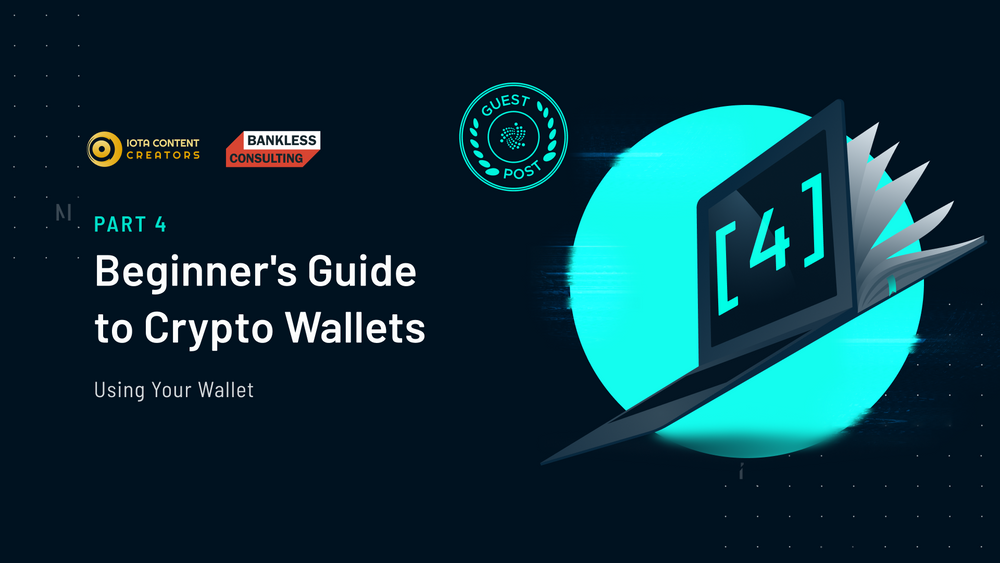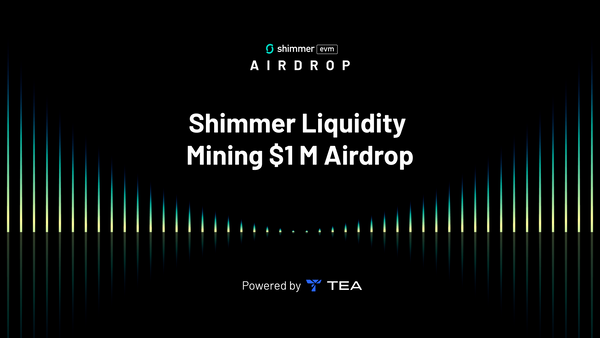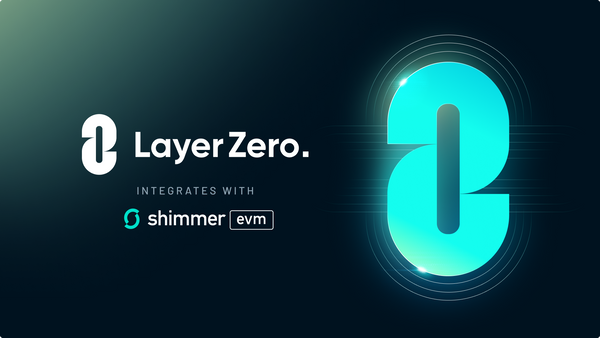Beginner's Guide to Crypto Wallets: Part 4
Using Your Wallet
Now that you’ve understood what a crypto wallet is and how to choose one, this fourth and final part of our beginner’s guide to crypto wallets by the IOTA Content Creators DAO and Bankless explains the key points about using your wallet.
Read Part 1 here.
There are many different wallets out there, and the utility of each one varies. Most custodial or hosted wallets will have videos you can watch to get up to speed on how to use the wallet. In the same way, many hardware wallets also have online videos or tutorials regarding the use of their products. Just make sure that the video comes from the official source of the wallet and that it’s not a scammer trying to gain access to your crypto!
When using your wallet there are a few things to keep in mind.
- First, double-check the address you’re sending cryptocurrencies to. When you copy that public key address, paste it into the field and hit send, there’s usually no going back. This is of course different if you set an expiration time in the Shimmer Firefly wallet, but most exchanges don’t support this feature yet. A good practice is to check the first five or six characters and the last five or six characters of the public key address at a minimum. Never manually type it in if you can avoid it because it’s easy to confuse some characters or make a typo. If you do, your coins are gone. It’s also a good idea to clear addresses from your clipboard after use. There is malware out there that basically scans your clipboard for addresses. If you don’t clear these, the malware can send the clipboard addresses to hackers.
- Another tip to help secure your wallet is to use a strong password and lock it when not in use. All wallets have passwords and they also allow you to lock them when you’re finished so that they can’t be loaded by someone else if you click a phishing link. If you lock it every time after you finish using it, then you have to unlock it before it can be used by any website that you access.
- Don’t store your seed phrases online. If you store something online, then it can be hacked. There are password manager tools out there that store your seed phrases. Even though these tools are super-convenient and your seeds are encrypted, they are a prime target for hackers. A better option is to store your seed phrases on Crypto Steels. These are physical plates that can be engraved or stamped with your seed. If stored in a safe, the only way that the Steels are accessed is if someone physically opens the safe. The point can’t be overstated: don’t ever share your seed phrase or private key!
- A practical way to keep your wallet safe is by monitoring the permissions you’ve granted through your wallet. Websites like revoke.cash checks the permissions you’ve granted and gives you the option to disconnect your wallet. It is a great operational security practice to check from time to time that any outdated permissions that you’ve granted in the past no longer have access to your wallet. Similarly, if you use Google Apps and sign in with Google to different projects, it’s good practice now and then to go in and revoke the permissions for projects you’re not using anymore.
- FOMO or Fear Of Missing Out is a real thing in crypto. Maybe you hear about this new NFT project that everyone’s excited about. Discord is going crazy, they’re about to do a mint and someone pings you. Maybe there’s a chance to get on the whitelist or there’s an opportunity to mint it right now. This is a time when bad decisions are made, so just check your FOMO. It does make you do risky things and there might not be recourse if something goes wrong. Double-check before signing anything!
- If you’re using an open Wi-Fi hotspot and making a crypto transaction with an exchange or between different wallets, always use a VPN, or Virtual Private Network. The risks here are probably small but worth mentioning. A VPN essentially masks the traffic between your computer and the internet. The actual contents of the traffic are no longer visible as well as the source and the destination of the traffic. It adds an extra layer of security that makes it hard for the average hacker to overcome. The risks of using an open network are much greater if you were to go to NFT NYC; it’s literally a huge conference with thousands of people in the crypto space. In this situation, you should always use a VPN because there will be a ton of hackers there.
- Lastly, it’s important to follow some basic computer best practices, like keeping your software up to date. This includes your wallet software/firmware. Also, make sure to back up your seed phrases safely. Crypto Steels and a safe is one option but even if you just write it down on paper and split it across different locations this would suffice. Just be sure that you can access it if you need to and it’s not stored on the internet.
Following these basic, routine computer maintenance tips will go a long way to helping secure your cryptocurrencies in the wallets you choose while providing a safe, smooth user experience.
Beginner's Guide to Crypto Wallets
Part 1 What is a Crypto Wallet?
Part 2 Types of Crypto Wallets
Part 3 How To Choose Your Wallet
Part 4 Using Your Wallet
Find out more about the IOTA Content Creators DAO on Twitter and follow their newsletter on Medium. You can watch the full series of IOTA x Bankless DeFi education videos on YouTube. Our special thanks to 0xKB for hosting the Bankless session and to DigitalSoul.x. for preparing the original copy of this article for the IOTA Content Creators DAO newsletter.
Also in this series
Beginner's Guide to DEX vs. CEX
Follow us on our official channels for all the latest Shimmer news:
Discord | Twitter | LinkedIn | Reddit



